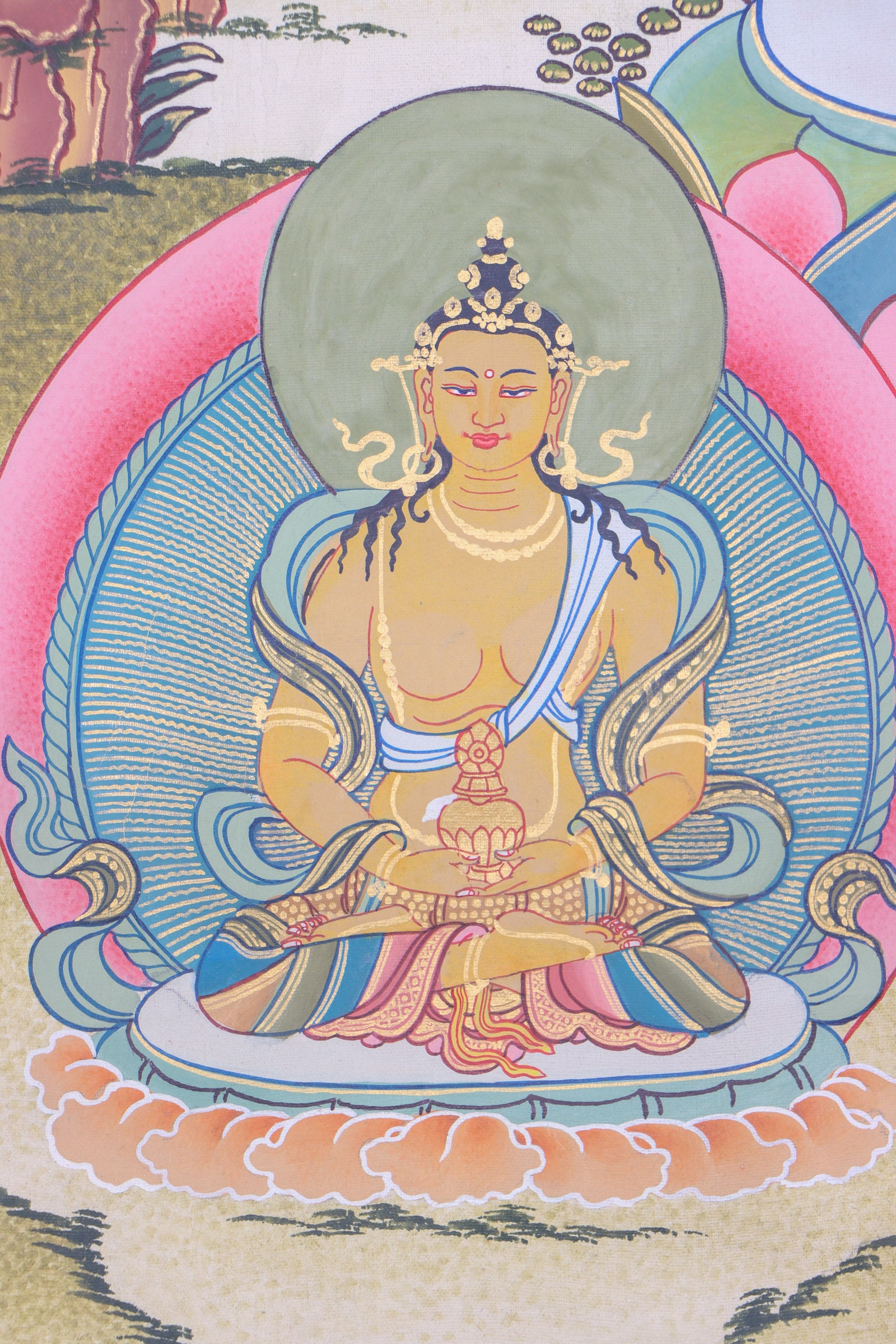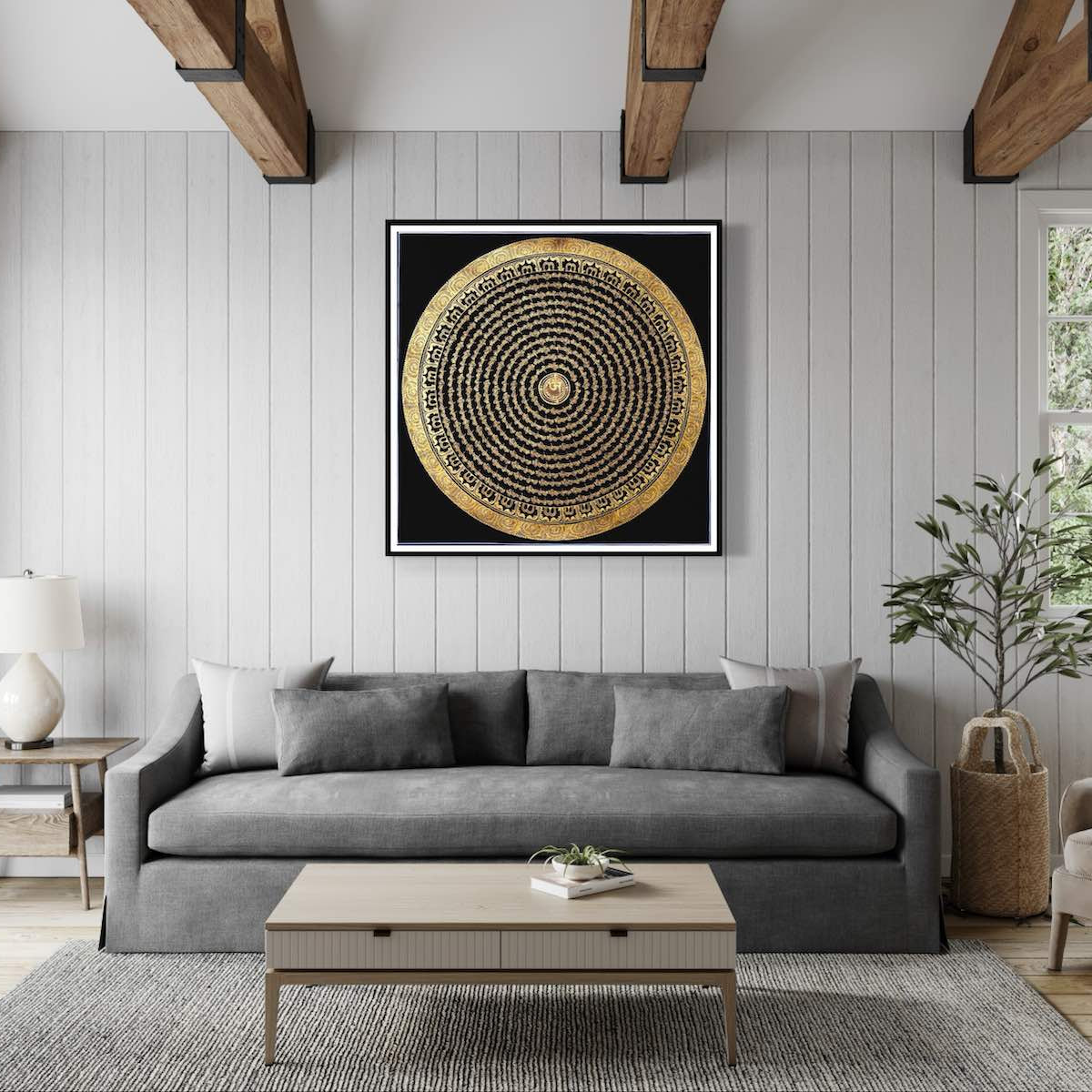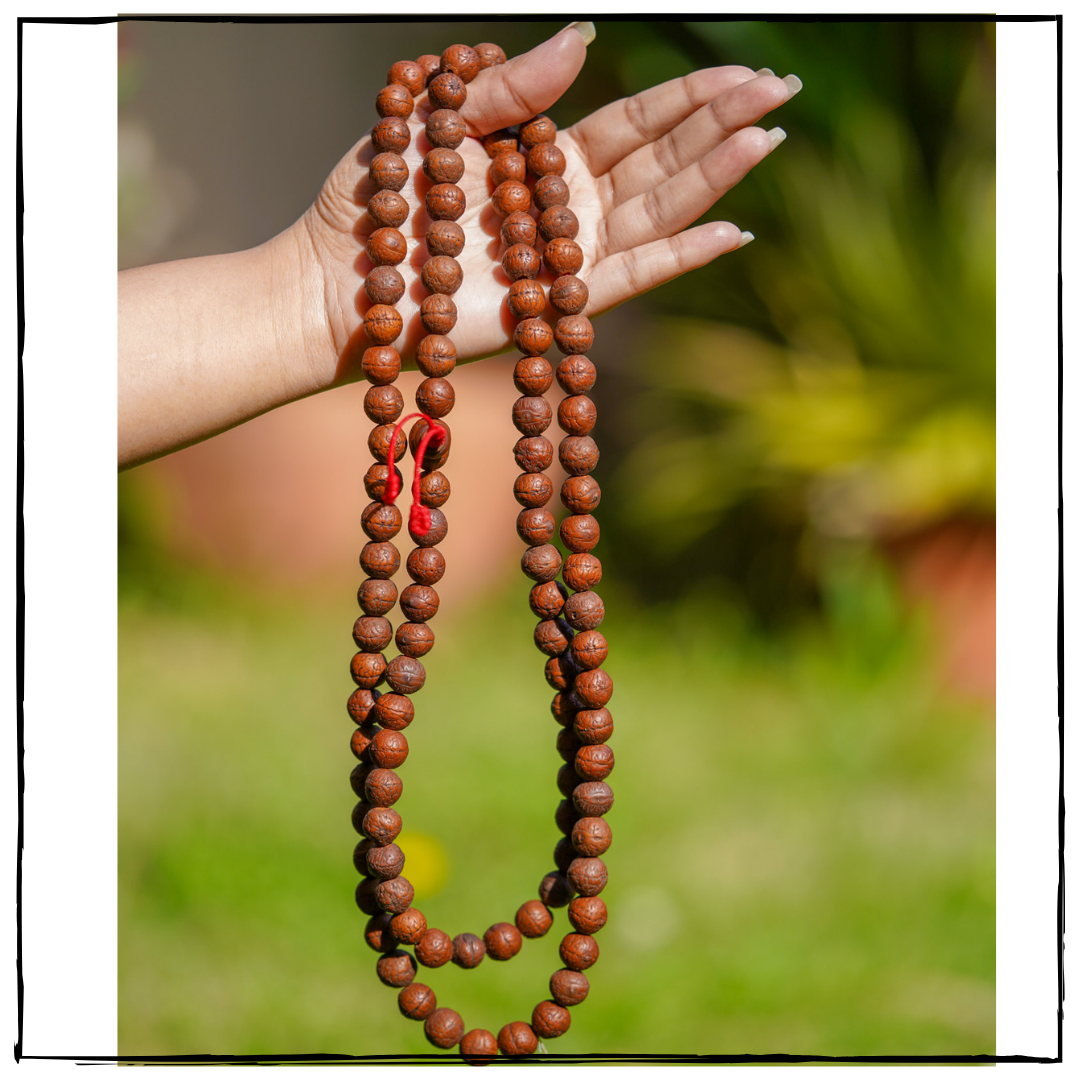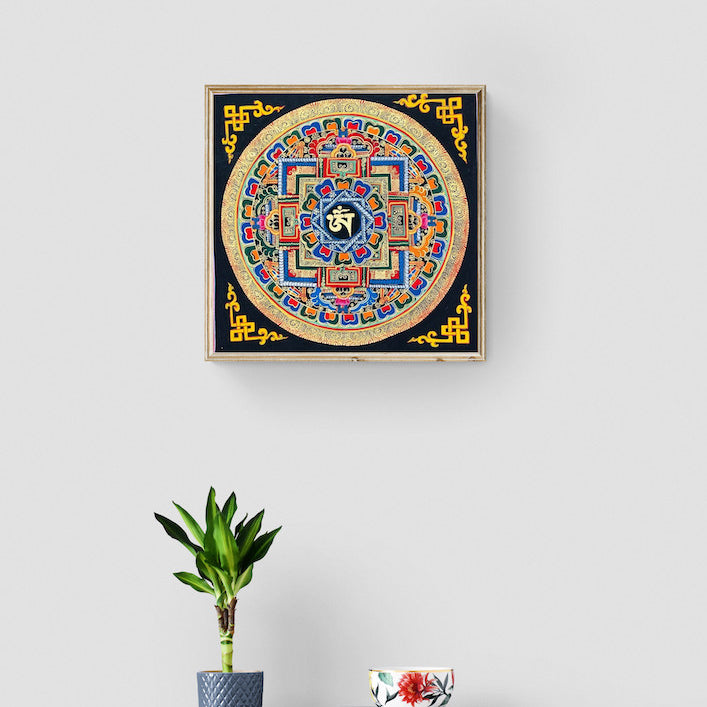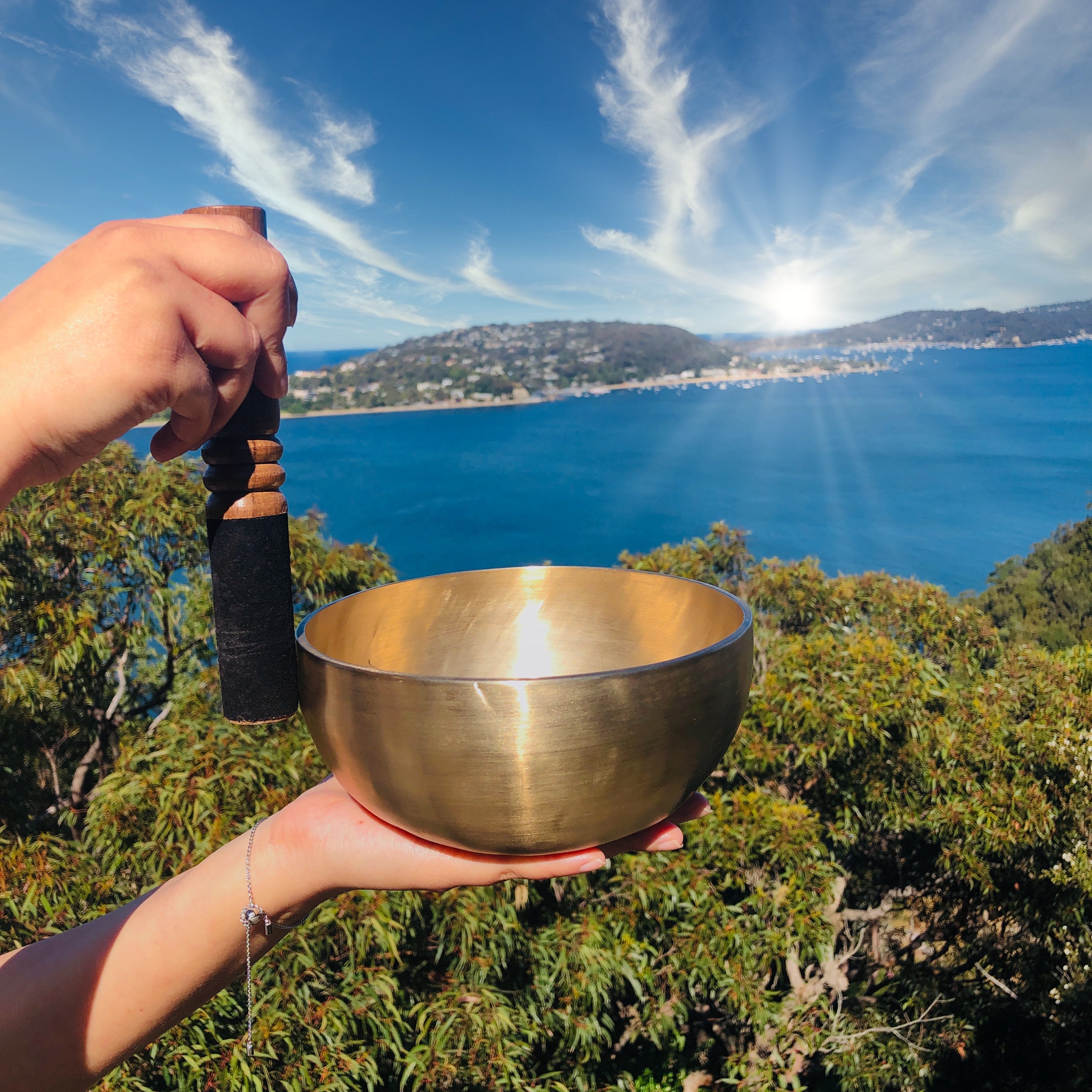Amitayus Thangka Painting
Couldn't load pickup availability
Description
This Amitayus Thangka Painting invites powerful blessings and longevity into your life! It's crafted with intention to bring health, well-being, and a longer lifespan to whoever gazes upon it. Depicting Amitayus Buddha, a deity connected to Tibetan Buddhism, its beauty and energy are sure to inspire strong emotions.
Amitayus Buddha is artfully depicted with three heads, serene expression, richly ornamented robes, and jewelry. He holds a vase of elixir of immortality called the "nectar of immortality" or "amrita" that symbolizes long life, vitality, and good health. The vase, adorned with jewels and topped with a long-life vase, represents accumulated positive merit and success. The color palette of an Amitayus Thangka painting is rich and vibrant, featuring celestial beings, and lush landscapes that bring peace and prosperity. Amitayus is painted with a tranquil white complexion, embodying purity and vigor.
Amitayus is one of the Three Long-Life Deities alongside White Tara and Ushnisha Vijaya in Tibetan Buddhism. Thangka paintings featuring Amitayus are valuable works of art, treasured by collectors of Tibetan art. They serve as sacred symbols of long life, health and well-being, used in devotion, meditation and blessings.
Product Specification:
- Hand Painted
- Materials: Semi-Precious Natural Minerals
- Base: Cotton Canvas
- Origination: Nepal

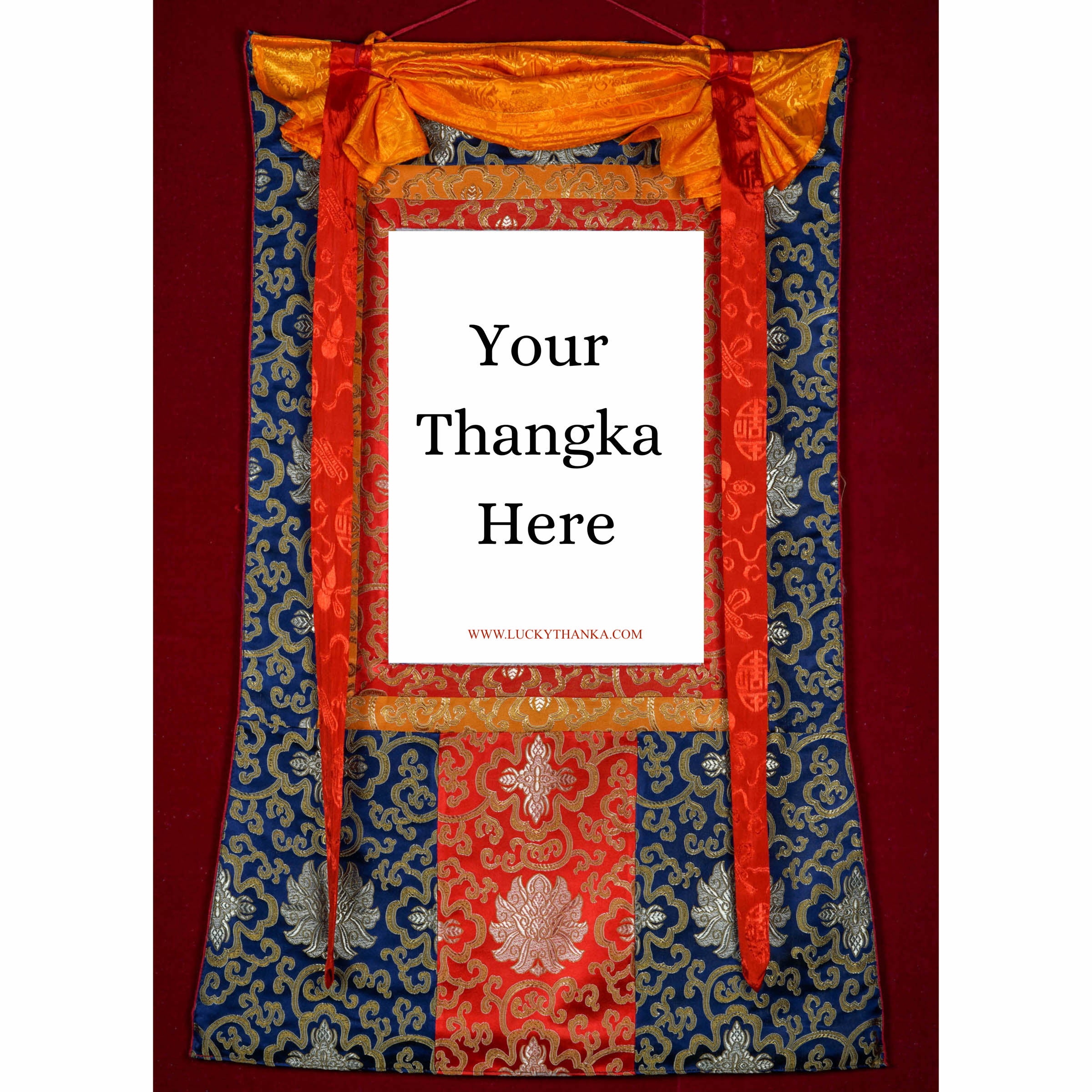
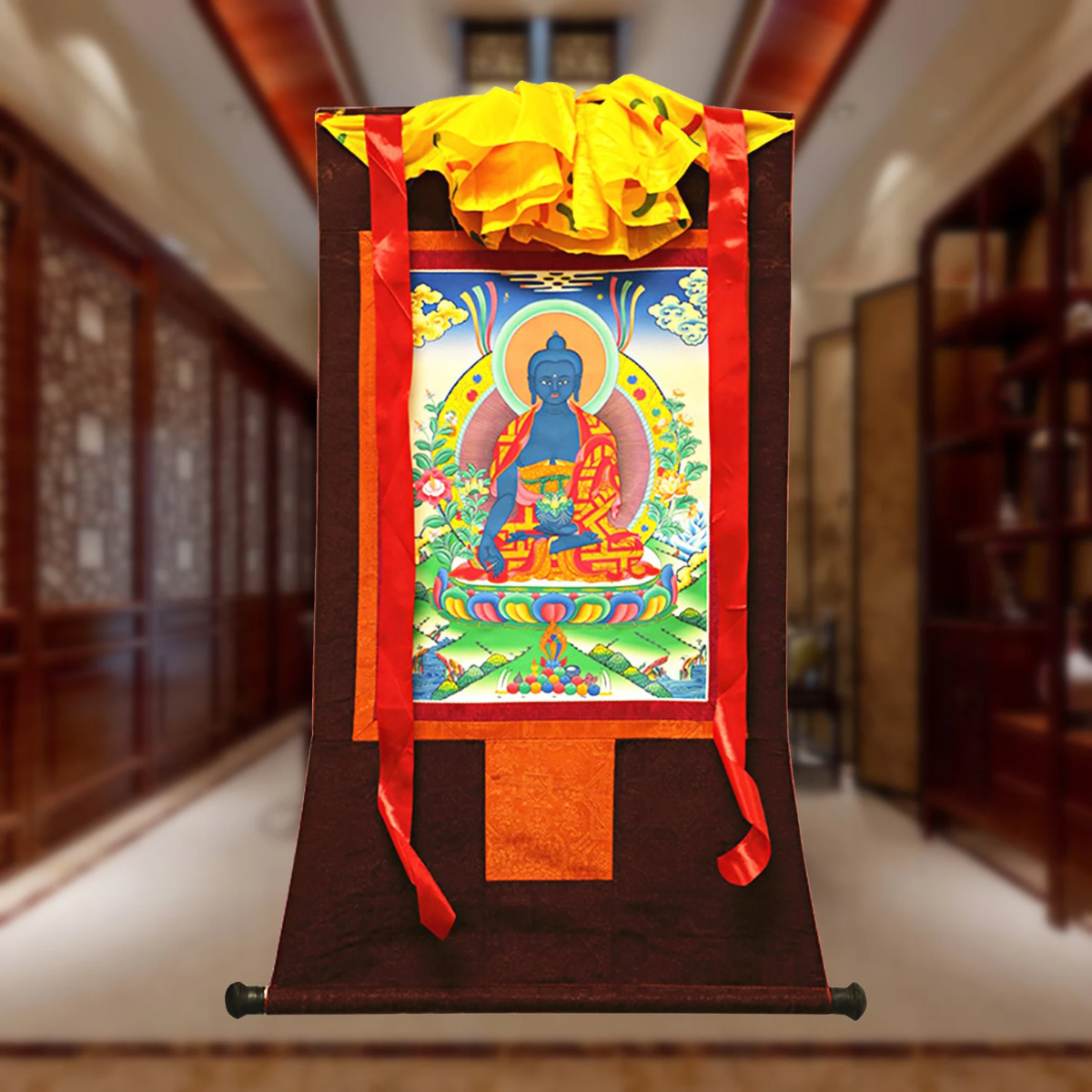
Hand Embroidery Brocade
Want to add a Brocade to your beautiful Thangka Painting? Traditional Style Brocade has been one of the most popular form of mounting as it has a greater religious merit.
Note: Make sure you have added the Thangka to your cart first.
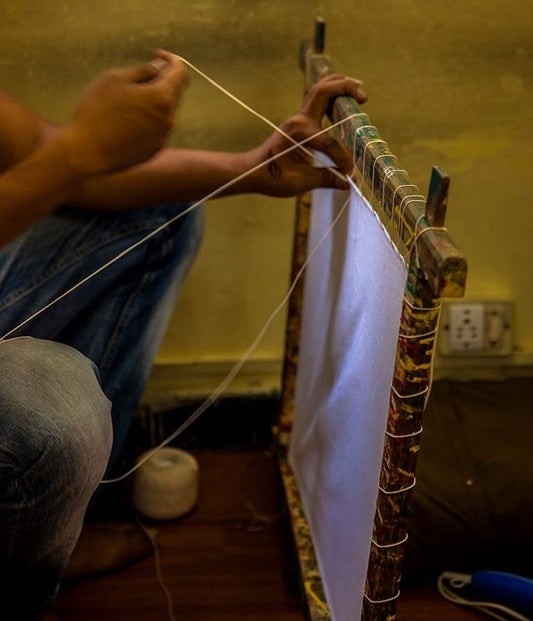
100% Cotton Canvas
Preparing the Cotton canvas before starting to paint a Thangka. This process includes washing, drying, stretching, sizing and everything needed to make a perfect base for the thangka to last for centuries.
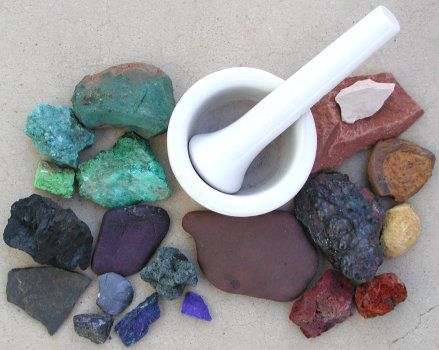
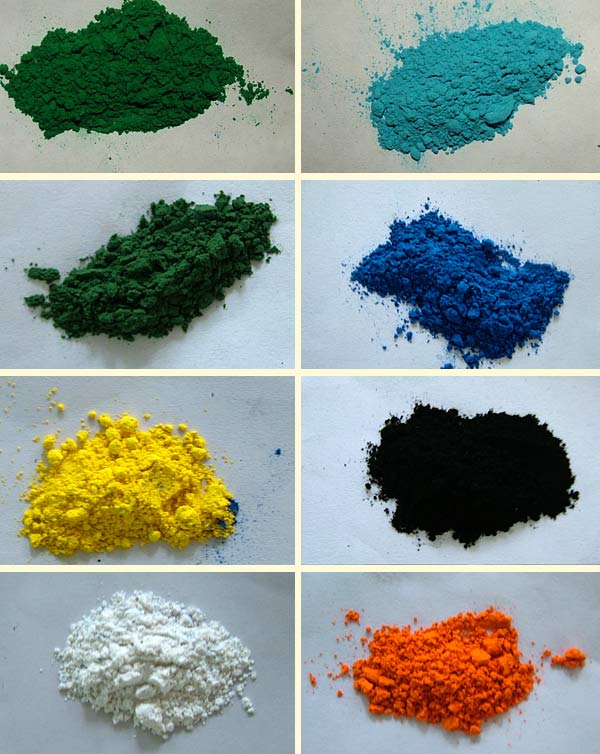
Natural Minerals
Thangka Paintings are painted using the natural minerals. These are firstly grind into the powder form and then used in the thangka as a paint.







